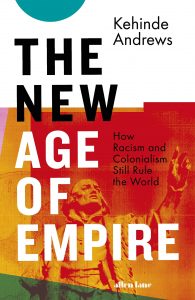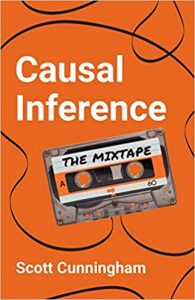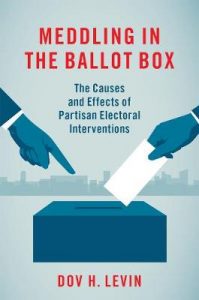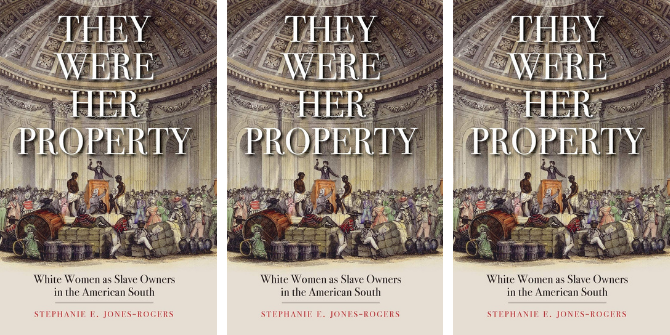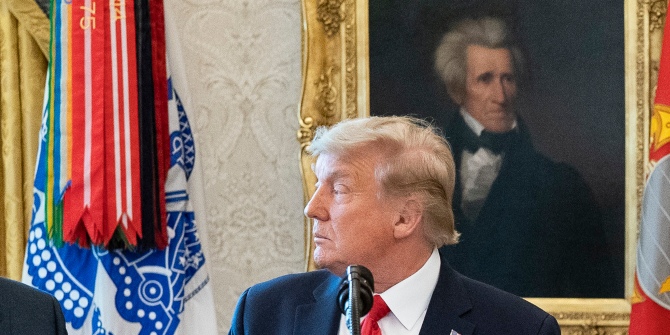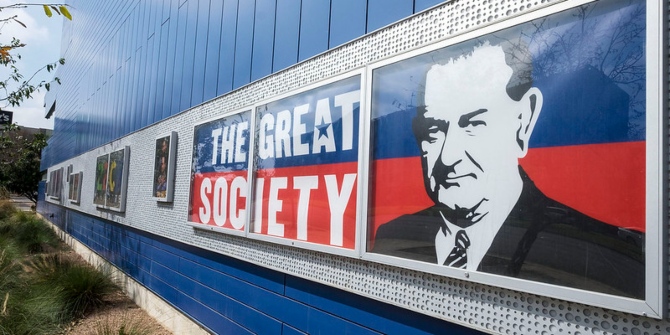 With 2019 now behind us, it’s now time to look ahead to the coming year in US politics and policy. USAPP Managing Editor, Chris Gilson gives a glimpse of what we’re likely to see this year.
With 2019 now behind us, it’s now time to look ahead to the coming year in US politics and policy. USAPP Managing Editor, Chris Gilson gives a glimpse of what we’re likely to see this year.
Welcome to 2020! It’s an election year, so the already frenetic political atmosphere in the US will soon be kicking into an even higher gear. Here, I’ll be looking at what we know is going to happen this year, from the presidential primary race to the general election, and other contests and policy milestones in between. Note that I’ll be looking at what we know is going to happen this year, rather than possibilities or predictions.
As there are so many debates and votes planned in the coming primary, check out a complete list here before reading on, as there’s not enough space here to cover them all in detail. You can also check out our Primary Primers series which explores key themes, ideas, concepts, procedures and events that shape, affect and define the US presidential primary process.
January – conflict with Iran and a possible impeachment trial
Only two days into the new year, the US launched a drone strike against Qasem Soleimani, killing the Iranian military leader at Baghdad Airport. Following the strike, President Trump warned Iran that it would hit 52 targets if the country retaliated for the attack. Understandably, Trump’s surprise move has prompted fears that further action against Iran might be on the horizon for the US. Last August Alexander Soderholm of the LSE International Drug Policy Unit and the US Centre wrote that the aftermath of military interventions in Iraq and Afghanistan have shown that similar action against Iran would be a grave mistake.
Moving to US domestic policy, President Trump began 2020 as only the third president in US history to have been impeached. Trump’s Senate trial is likely to happen in January – in November last year, Scott Fischer and Elizabeth Freund Larus commented that:
An impeachment of Donald Trump is likely to follow the model of the Clinton impeachment, which was viewed as a partisan process rather than the Nixon impeachment model, which began as a partisan process but eventually evolved into a bipartisan one.
The big takeaway from this is that Trump is very unlikely to be convicted by a Senate that is majority Republican.
February – Democratic Primary contest begins in earnest
On February 3rd, voters in Iowa will caucus to decide on their preferred presidential candidate. While President Trump is a virtual certainty to win the Republican caucuses (and the other state primaries and caucuses to follow), things will be hotly contested on the Democratic side. As of January 6th, polls did not seem to favor any one candidate with South Bend Mayor Pete Buttigieg, former Vice President Joe Biden, and Senators Bernie Sanders and Elizabeth Warren all in the same ballpark in terms of support.

Credit: “Precinct 61” by Phil Roeder is licensed under CC BY 2.0
But why is this first primary contest important? Well, it is – and it isn’t. Back in November, Andrew D. Green of Central College commented that:
Though Iowa voters certainly are not “king makers” during the nomination process, Iowa voters who venture out to participate on February 3rd will play an important role in selecting the presidential nominees for the Democratic and Republican Parties.
Alongside the New Hampshire Primary, Nevada Democratic caucuses, and the South Carolina Democratic Primary, February will also see three televised debates among the candidates. Expect the winners of the Iowa Caucuses and New Hampshire Primary to spin their wins into momentum to push them towards Super Tuesday in March. On the subject of debates, research from Amanda L. Wintersieck of the University of Tennessee at Chattanooga has found that real-time fact-checking can change people’s opinion about a candidate, but only if the ratings are decisive.
March – Super Tuesday and a Golden State Congressional Primary
The biggest day in US politics ahead of the 2020 election will of course be Super Tuesday on March 3rd. This day will see 14 states hold elections to select 34 percent of the Democrats’ convention delegates. To find out more about Super Tuesday – and its importance – check out Barbara Norrander of the University of Arizona’s Primary Primer article on the subject from last November. Also – don’t forget to come to the US Centre event, Shaping America’s Future, the following day which will look at the results.
One novel aspect of Super Tuesday 2020 is that California will be participating. Previously, the Golden State held its primary contest in June – essentially too late to have any major impact on the primary result. Peter Finn of Kingston University and Robert Ledger of Schiller University wrote last May on California’s new and important role in the 2020 democratic primary.
Still on California, March 3rd will also see a top two primary for the state’s 25th Congressional District after Representative Katie Hill resigned in 2019 amid accusations of affairs with staffers. If there is no majority in the contest – which can be contested by both Democrats and Republicans – then there will be a runoff on May 12th.
April and May – Special elections in Maryland and Wisconsin
Another Congressional special election will be held in April, with voters in Maryland’s 7th solidly Democratic District heading to the polls to select a successor for Elijah Cummings, who had represented the district since 1996.
In May, Wisconsin’s 12th Congressional District will see a special election to replace Republican Sean Duffy, who resigned in 2019.
July and August – the Conventions
Mid July sees the Democrats meet in Milwaukee, Wisconsin to select their presidential nominee, while the Republicans will most likely declare President Trump their nominee towards the end of August in Charlotte, North Carolina. Given the Democrats need to win the sometime swing state of Wisconsin in the presidential election, Christopher B. Mann of Skidmore College and Joseph E. Uscinski of the University of Miami’s 2016 piece is worth a read – they write that that party conventions can swing voters in nearby counties, which can in turn shift the statewide outcome in a close contest.

“The balloon drop at the end of the Democratic convention” by Lorie Shaull is licensed under CC-BY-SA-2.0
September – Budget time
At the end of 2019, Congress agreed a budget deal which would fund the government until the end of September 2020. Given previous wrangling over budgets between Congress and the President, we could see the threat of a government shutdown at this point – right in the middle of a presidential election.
November – Elections!
On Tuesday November 3rd millions of Americans will head to the polls to select the next president. Aside from the presidency, all 435 US House seats will be up for grabs, as will 35 US Senate seats. As in past years, we’ll be live blogging the results as they come in with expert commentary from the US Centre and elsewhere.
Ballot measures are an often overlooked, but important, part of elections in the US. According to Ballotpedia, there will be 47 measures on state ballots, including measures to legalize cannabis in New Jersey, recompile Alabama’s state constitution, reform California’s bail system, and raise Florida’s minimum wage.
What are your predictions for 2020? Let me know in the comments below!
Please read our comments policy before commenting.
Note: This article gives the views of the authors, and not the position of USAPP – American Politics and Policy, nor the London School of Economics.
Shortened URL for this post: http://bit.ly/35tywsl
About the author
 Chris Gilson – LSE US Centre
Chris Gilson – LSE US Centre
Chris Gilson is the Managing Editor of USAPP, the US Centre’s daily blog on US politics and policy. He was previously Managing Editor of the LSE’s British Politics and Policy blog , and of EUROPP– the LSE’s European Politics and Policy blog, both for the LSE’s Public Policy Group. In 2012, Chris was the recipient of a UK Times Higher Education Leadership and Management Award for Knowledge Exchange/Transfer Initiative of the Year for the LSE’s blog initiatives. He is the co-author, with Amy Mollett, Cheryl Brumley, and Sierra Williams, of Communicating Your Research with Social Media: A Practical Guide to Using Blogs, Podcasts, Data Visualisations and Video (Sage, 2017). He has a undergraduate and a Masters degree in Geography, and a postgraduate diploma in Strategic Management, all from the University of Waikato, Hamilton, New Zealand.







